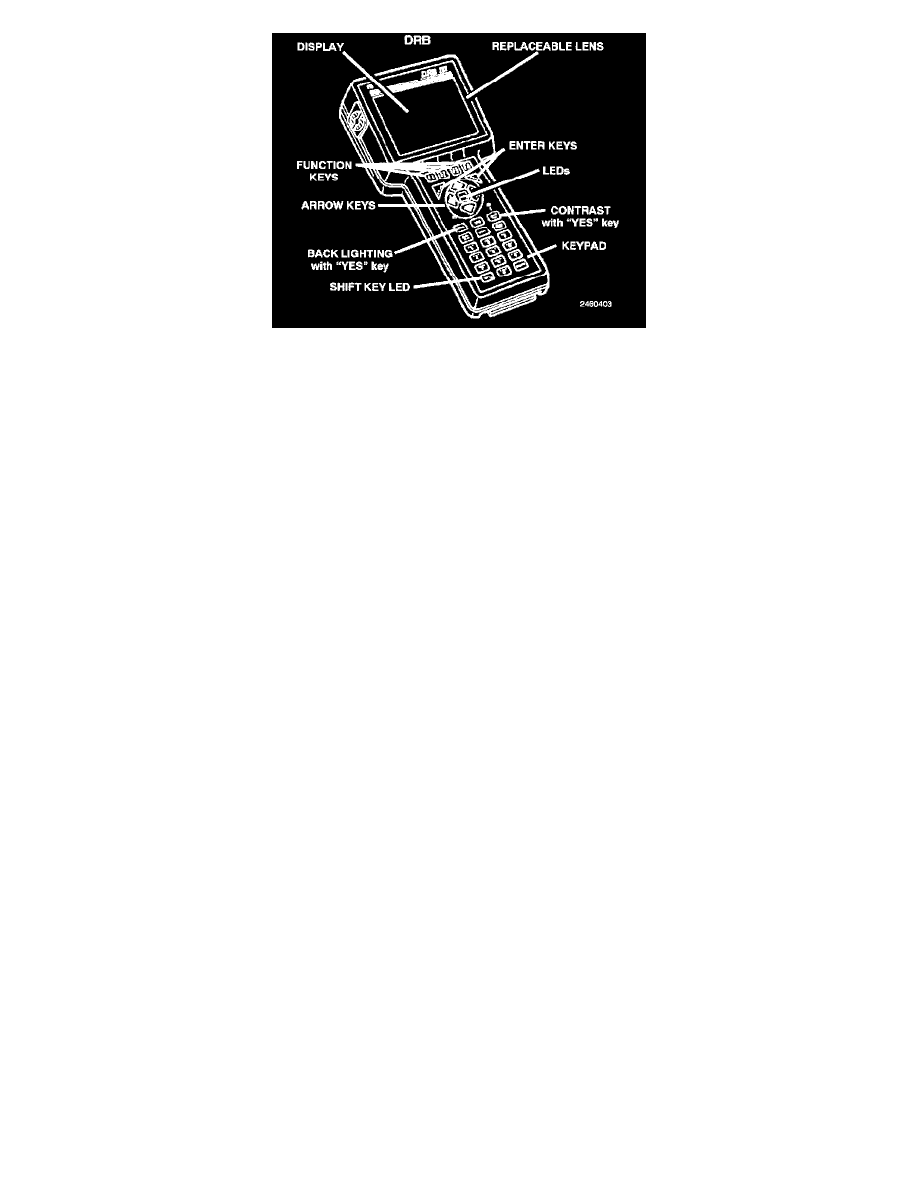Prowler V6-3.5L VIN G (1999)

DRB Scan Tool
DISPLAY IS NOT VISIBLE
Low temperatures will affect the visibility of the display. Adjust the contrast to compensate for this condition.
VEHICLE PREPARATION FOR TESTING
Make sure the vehicle being tested has a fully charged battery. If it does not, false diagnostic codes or error messages may occur.
SERVICING SUB-ASSEMBLIES
Some components of the body system are intended to be serviced as an assembly only. Attempting to remove or repair certain system
sub-components may result in personal injury and/or improper system operation. Only those components with approved repair and installation
procedures should be serviced.
DRB III SAFETY INFORMATION
WARNING: Exceeding the limits of the DRB multimeter is dangerous. It can expose you to serious or possibly fatal injury. Carefully
read and understand the cautions and the specification limits
-
Follow the vehicle manufacturer's service specifications at all times.
-
Do not use the DRB if it has been damaged.
-
Do not use the test leads if the insulation is damaged or if metal is exposed.
-
To avoid electrical shock, do not touch the test leads, tips, or the circuit being tested.
-
Choose the proper range and function for the measurement. Do not try voltage or current measurements that may exceed the rated capacity.
-
Do not exceed the limits shown in the table below:
FUNCTION - INPUT LIMIT
Volts - 0 - 500 peak volts AC, 0 - 500 volts DC
Ohms (resistance)* - 0-1.12 megohms
Frequency Measured, Frequency Generated - 0-10kHz
Temperature - -58 - 1100° F, -50 - 600° C
* Ohms cannot be measured if voltage is present. Ohms can be measured only in a non-powered circuit.
-
Voltage between any terminal and ground must not exceed 500v DC or 500v peak AC.
-
Use caution when measuring voltage above 25 V DC or 25 V AC.
-
The circuit being tested must be protected by a 10A fuse or circuit breaker.
-
Use the low current shunt to measure circuits up to 10A. Use the high current clamp to measure circuits exceeding 10A.
-
When testing for the presence of voltage or current, make sure the meter is functioning correctly. Take a reading of a known voltage or
current before accepting a zero reading.
-
Use caution when measuring voltage above 25 V DC or 25 V AC.
-
The circuit being tested must be protected by a 10A fuse or circuit breaker.
-
Use the low current shunt to measure circuits up to 10A. Use the high current clamp to measure circuits exceeding 10A.
-
When testing for the presence of voltage or current, make sure the meter is functioning correctly. Take a reading of a known voltage or
current before accepting a zero reading.
WARNINGS
Vehicle Damage Warnings
